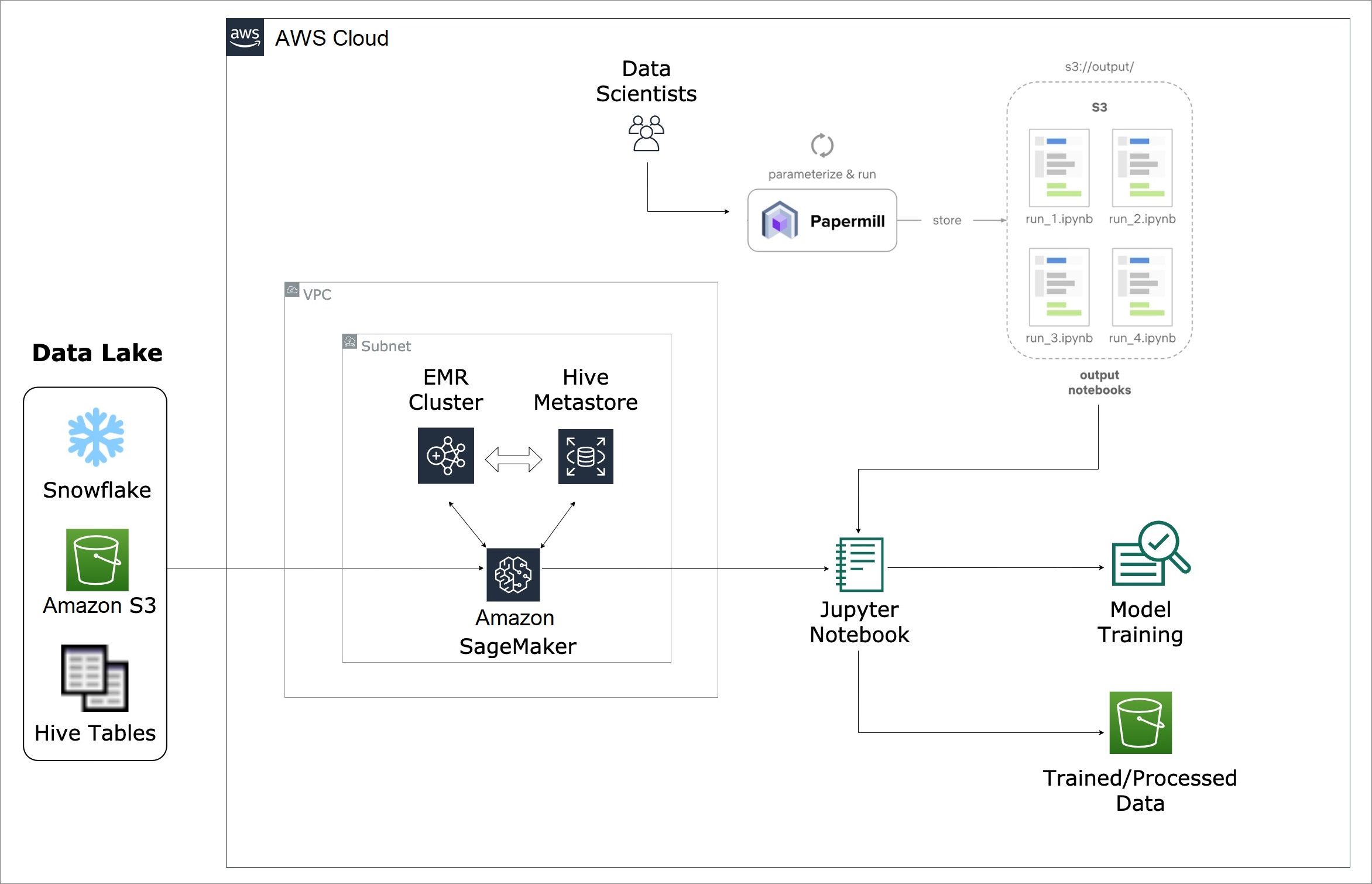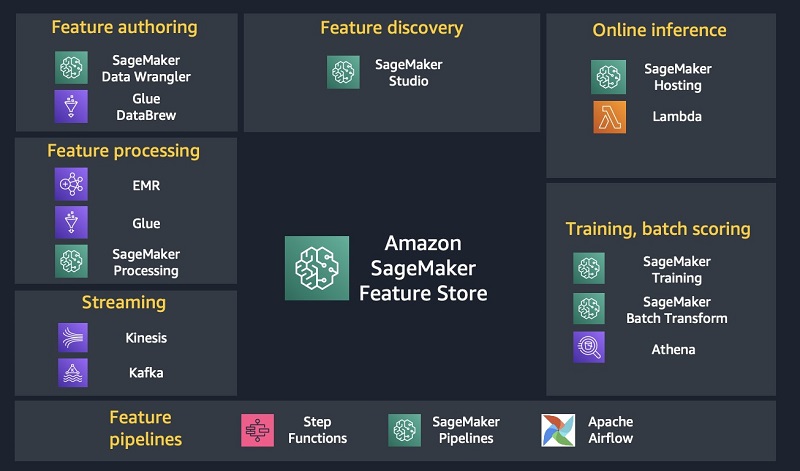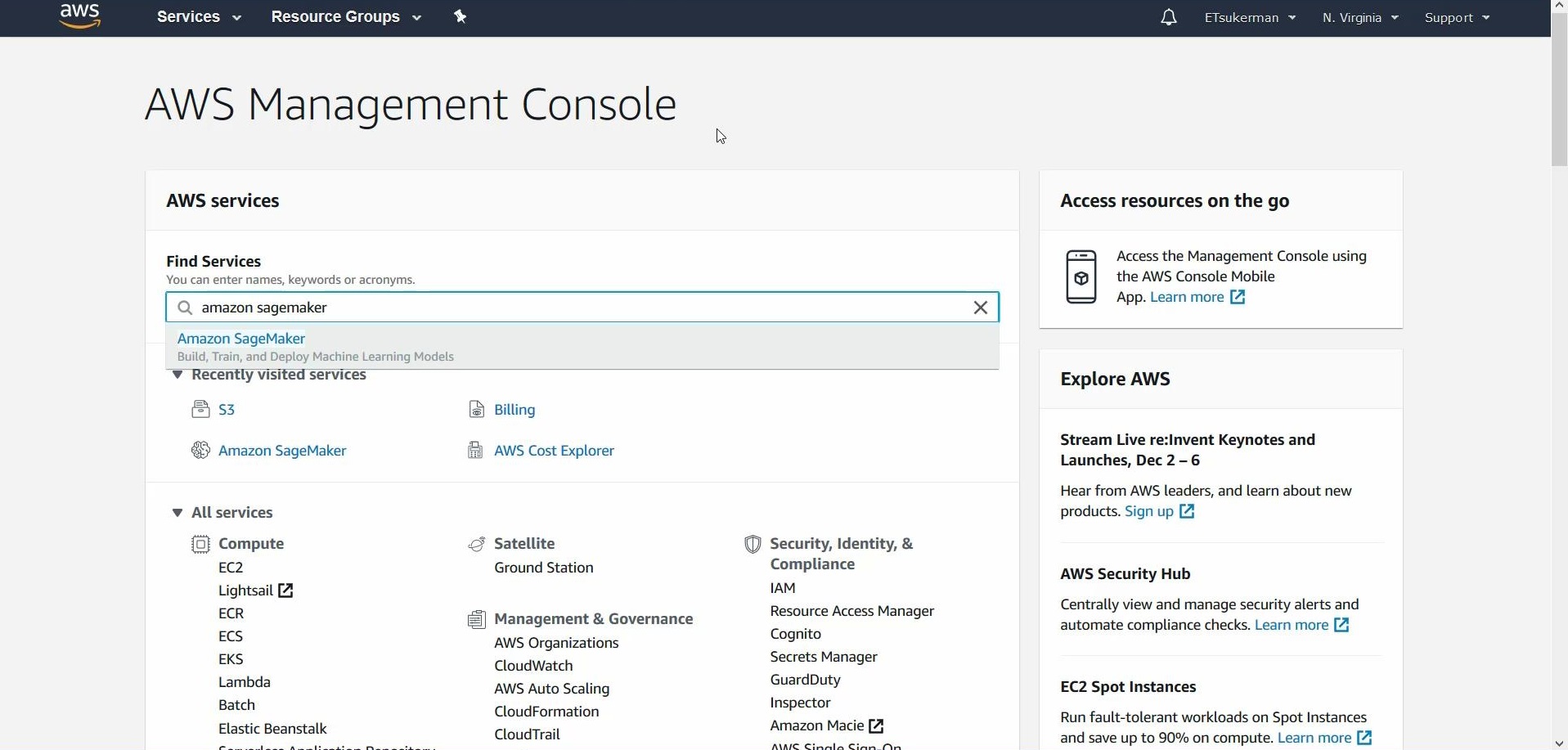What is Amazon SageMaker and How Can It Help Your Business?
Amazon SageMaker is a fully managed service that provides developers and data scientists with the ability to build, train, and deploy machine learning models quickly and easily. As a part of Amazon Web Services (AWS), SageMaker simplifies the machine learning workflow and enables faster time-to-market for machine learning applications. With SageMaker, businesses can reduce the time and effort required to set up and manage the infrastructure for machine learning projects, allowing them to focus on developing innovative and intelligent solutions.
Key Features and Capabilities of Amazon SageMaker
Amazon SageMaker is a powerful machine learning platform that offers several key features and capabilities, making it an ideal choice for developers and data scientists. One of the primary benefits of SageMaker is its support for popular machine learning frameworks, such as TensorFlow, PyTorch, and Scikit-learn. This support enables users to build machine learning models using their preferred framework, without having to worry about the underlying infrastructure.
Another significant advantage of Amazon SageMaker is its pre-built machine learning algorithms, which can be used to solve common machine learning problems quickly and easily. These algorithms are optimized for performance and accuracy, enabling users to build high-quality models with minimal effort. Additionally, SageMaker offers one-click model deployment, allowing users to deploy their models to production environments with just a few clicks.
By simplifying the machine learning workflow and reducing the time and effort required to build, train, and deploy machine learning models, Amazon SageMaker enables faster time-to-market for machine learning applications. This, in turn, allows businesses to innovate more quickly and stay ahead of the competition.
Real-World Applications of Amazon SageMaker
Amazon SageMaker has been used in various industries to solve real-world problems, demonstrating its versatility and effectiveness. In healthcare, SageMaker has been used to improve patient outcomes by analyzing medical records and identifying patterns that can help predict disease progression. By using machine learning models to analyze large datasets of medical records, healthcare providers can develop personalized treatment plans that are tailored to each patient’s unique needs.
In finance, SageMaker has been used to detect fraud by analyzing financial transactions and identifying anomalies that may indicate fraudulent activity. By using machine learning models to analyze patterns in financial transactions, financial institutions can detect fraudulent activity in real-time, reducing the risk of financial losses and protecting their customers’ accounts.
In retail, SageMaker has been used to optimize inventory management by analyzing sales data and predicting future demand. By using machine learning models to analyze sales data, retailers can forecast demand for specific products, ensuring that they have the right products in stock at the right time. This, in turn, can help retailers improve customer satisfaction, reduce waste, and increase profits.
These are just a few examples of how Amazon SageMaker has been used in real-world applications. By providing a powerful and easy-to-use machine learning platform, SageMaker enables businesses to innovate more quickly and stay ahead of the competition.
How to Get Started with Amazon SageMaker
To get started with Amazon SageMaker, you will need to create an AWS account if you don’t already have one. Once you have an AWS account, you can access the SageMaker console by navigating to the AWS Management Console and selecting “SageMaker” from the list of services. From there, you can create a new notebook instance, which will provide you with a development environment for building and training machine learning models.
The SageMaker console includes a user-friendly interface with several main components, including the “SageMaker Studio” for building and training models, the “Experiments” feature for tracking and managing experiments, and the “Model Registry” for managing and deploying models. You can also access the SageMaker API to integrate SageMaker into your existing development workflow.
To get started with SageMaker, you will need to have some basic knowledge of machine learning concepts and programming languages such as Python. However, SageMaker includes several tutorials and resources to help you get started, even if you are new to machine learning.
Building a Machine Learning Model with Amazon SageMaker
Building a machine learning model with Amazon SageMaker involves several stages, including data preparation, model training, and deployment. Here is a high-level overview of the process and the tools and services that can be used at each stage:
- Data Preparation: The first step in building a machine learning model is to prepare the data. Amazon SageMaker provides several tools for data preparation, including Amazon SageMaker Data Wrangler, which allows you to clean, transform, and prepare data for machine learning. You can also use AWS Glue to extract, transform, and load data from various sources.
- Model Training: Once the data is prepared, you can use Amazon SageMaker to train your machine learning model. SageMaker supports popular machine learning frameworks such as TensorFlow, PyTorch, and Scikit-learn. You can use Amazon SageMaker Training to train your model using powerful computing resources in the cloud. SageMaker also provides pre-built machine learning algorithms that you can use to quickly train your model.
- Model Deployment: After training your model, you can deploy it to a production environment using Amazon SageMaker. SageMaker provides several options for model deployment, including Amazon SageMaker Endpoints, which allows you to deploy your model as a scalable and highly available endpoint. You can also use Amazon SageMaker Batch Transform to run large-scale inferences on your model.
By simplifying the machine learning workflow and providing powerful tools and services for data preparation, model training, and deployment, Amazon SageMaker enables faster time-to-market for machine learning applications.
Best Practices for Using Amazon SageMaker
Amazon SageMaker is a powerful tool for building, training, and deploying machine learning models. To ensure successful machine learning projects, it is essential to follow best practices for using SageMaker. Here are some best practices to keep in mind:
- Optimize Model Training for Performance and Cost: When training machine learning models, it is essential to optimize for both performance and cost. Amazon SageMaker provides several tools for optimizing model training, including Amazon SageMaker Debugger, which allows you to monitor and debug machine learning models during training. You can also use Amazon SageMaker Autopilot to automatically build, train, and tune machine learning models, which can help reduce costs and improve performance.
- Monitor Model Performance in Production: Once a machine learning model is deployed in production, it is essential to monitor its performance to ensure it is delivering accurate results. Amazon SageMaker provides several tools for monitoring model performance, including Amazon CloudWatch, which allows you to monitor metrics such as latency and throughput. You can also use Amazon SageMaker Model Monitor to detect concept drift and data quality issues in real-time.
- Ensure Data Privacy and Security: Data privacy and security are critical considerations when building machine learning models. Amazon SageMaker provides several tools for ensuring data privacy and security, including Amazon SageMaker Clarify, which allows you to detect and mitigate bias in machine learning models. You can also use Amazon SageMaker JumpStart to access pre-built machine learning models that have been trained on publicly available datasets, which can help reduce the risk of data breaches.
By following these best practices, you can ensure successful machine learning projects with Amazon SageMaker and take advantage of its powerful features and capabilities.
Comparing Amazon SageMaker with Other Machine Learning Platforms
When it comes to machine learning platforms, there are several options available, including Google Cloud AI Platform and Microsoft Azure Machine Learning. However, Amazon SageMaker stands out as a preferred choice for many businesses and industries due to its unique features and benefits. Here’s how Amazon SageMaker compares with other machine learning platforms:
- Ease of Use: Amazon SageMaker is designed to be user-friendly and easy to use, even for those who are new to machine learning. The platform provides a simple and intuitive user interface, making it easy to build, train, and deploy machine learning models. In contrast, other machine learning platforms can be more complex and require more technical expertise.
- Scalability: Amazon SageMaker is highly scalable, allowing you to quickly and easily scale your machine learning workflows to handle large volumes of data. This is particularly useful for businesses that need to process and analyze large datasets in real-time. Other machine learning platforms may not offer the same level of scalability, which can limit their usefulness for certain applications.
- Integration: Amazon SageMaker integrates seamlessly with other AWS services, such as Amazon S3, Amazon Kinesis, and Amazon DynamoDB. This makes it easy to build end-to-end machine learning workflows that can handle data ingestion, processing, and analysis. Other machine learning platforms may not offer the same level of integration with other services, which can make it more difficult to build complete machine learning workflows.
- Cost: Amazon SageMaker offers flexible pricing options that allow you to pay only for the resources you use. This can help you save money compared to other machine learning platforms that may charge higher fees for similar resources. Additionally, Amazon SageMaker provides tools for optimizing model training for performance and cost, which can help you further reduce costs and improve efficiency.
In summary, Amazon SageMaker is a powerful and versatile machine learning platform that offers several unique features and benefits compared to other machine learning platforms. Its ease of use, scalability, integration, and cost-effectiveness make it an ideal choice for businesses and industries looking to build and deploy machine learning models quickly and easily.
Conclusion: The Future of Machine Learning with Amazon SageMaker
Amazon SageMaker is a powerful and versatile machine learning platform that offers numerous benefits for businesses and industries looking to build and deploy machine learning models quickly and easily. With its support for popular machine learning frameworks, pre-built machine learning algorithms, and one-click model deployment, SageMaker simplifies the machine learning workflow and enables faster time-to-market for machine learning applications.
Real-world examples have shown how Amazon SageMaker has been used to improve patient outcomes in healthcare, detect fraud in finance, and optimize inventory management in retail. By enabling faster and more accurate machine learning applications, SageMaker has the potential to transform businesses and industries, providing valuable insights and driving innovation.
When getting started with Amazon SageMaker, it’s essential to follow best practices for using the platform, such as optimizing model training for performance and cost, monitoring model performance in production, and ensuring data privacy and security. By following these practices, businesses can ensure successful machine learning projects and maximize the value of their investment in SageMaker.
Compared to other machine learning platforms, such as Google Cloud AI Platform and Microsoft Azure Machine Learning, Amazon SageMaker offers several unique features and benefits. Its ease of use, scalability, integration, and cost-effectiveness make it an ideal choice for businesses and industries looking to build and deploy machine learning models quickly and easily.
In conclusion, the future of machine learning with Amazon SageMaker is bright. With its powerful features and capabilities, SageMaker is well-positioned to help businesses and industries leverage the power of machine learning to drive innovation, improve efficiency, and gain a competitive edge.


-1608021404023.jpg)



